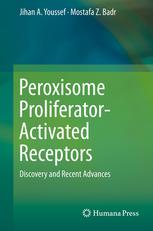

Most ebook files are in PDF format, so you can easily read them using various software such as Foxit Reader or directly on the Google Chrome browser.
Some ebook files are released by publishers in other formats such as .awz, .mobi, .epub, .fb2, etc. You may need to install specific software to read these formats on mobile/PC, such as Calibre.
Please read the tutorial at this link: https://ebookbell.com/faq
We offer FREE conversion to the popular formats you request; however, this may take some time. Therefore, right after payment, please email us, and we will try to provide the service as quickly as possible.
For some exceptional file formats or broken links (if any), please refrain from opening any disputes. Instead, email us first, and we will try to assist within a maximum of 6 hours.
EbookBell Team

4.7
46 reviewsAll three peroxisome proliferator-activated receptor (PPAR) subtypes share a high degree of structural homology while exhibiting differences in function, tissue distribution, and ligand specificity. In Peroxisome Proliferator-Activated Receptors: Discovery and Recent Advances, the authors trace the history of PPAR discovery and detail the receptor structure and its posttranslational modifications. Furthermore, endogenous ligands as well as various classes of exogenous ligands, subtype-selective, dual and pan agonists as well as antagonists, are discussed. In addition, the tissue distribution and versatile functions of PPAR subtypes in major organs are described.
As PPARs play critical roles as regulators of numerous physiological as well as pathophysiological pathways, Peroxisome Proliferator-Activated Receptors: Discovery and Recent Advances aims to help researchers to develop safer and more effective PPAR modulators as therapeutic agents to treat a myriad of diseases and conditions.